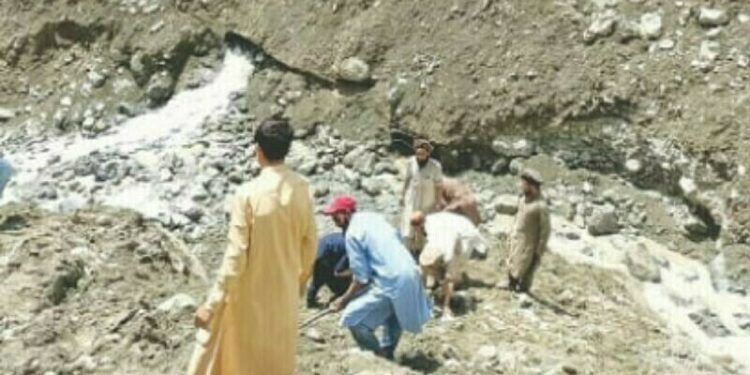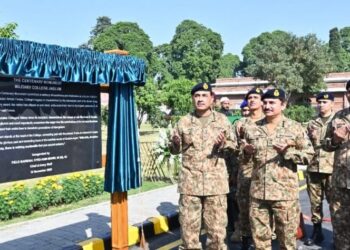Introduction
In a devastating incident in Gilgit, eight local volunteers lost their lives and three others sustained injuries when a landslide struck as they worked to restore a flood-damaged irrigation channel. The tragedy occurred on Sunday night in the Dniyor (also spelled Dnevar) area, underscoring the dangers faced by communities battling the aftermath of recent natural disasters in Gilgit-Baltistan.
Details of the Incident
According to Gilgit police, the group of volunteers had gathered to repair a crucial water supply channel that had been damaged during recent flooding. At least fifteen locals were involved in the late-night restoration work when a sudden landslide buried them under debris and rocks.
Why the Work Was Carried Out at Night
A local volunteer explained that the extreme daytime heat had made restoration efforts nearly impossible during daylight hours. The intense heatwave gripping the region has created hazardous working conditions, forcing residents to conduct essential repair work after sunset.
Rescue Efforts and Immediate Response
The moment the landslide occurred, nearby residents rushed to the scene to aid the trapped volunteers. Rescue teams, including police, emergency services, and local community members, began digging through the rubble to reach those buried.
Number of Rescued and Casualties
- Rescued: Thirteen individuals were eventually pulled from the debris, many in critical condition.
- Fatalities: Eight of these victims succumbed to their injuries either at the scene or after being transferred to hospitals.
- Injured: Three people remain hospitalized with serious injuries.
Muhammad Akbar, a resident who participated in the rescue operation, told Dawn that victims were transported to various hospitals in Gilgit and Dniyor. Emergency status was declared in the hospitals to handle the influx of patients.
Challenges Faced During the Rescue Operation
Rescue workers reported significant difficulties during nighttime operations. Limited visibility made it challenging to locate and safely extract those buried under layers of earth and rock.
Another rescue team member described the scene as “chaotic,” with hundreds of concerned locals gathering to help, despite the danger of additional landslides. The possibility of more people still trapped under debris has not been ruled out, heightening concerns among the community.
Background: The July 22 Flash Flood Disaster
This landslide was not an isolated tragedy—it is directly linked to the aftermath of the catastrophic flash flood on July 22, caused by a cloudburst in Dniyor Nallah.
Extent of Damage from the Flash Flood
- Residential Areas: Entire neighborhoods were submerged, with many homes suffering severe structural damage.
- Agricultural Losses: Crops were washed away, depriving families of their livelihoods.
- Irrigation System: The flood destroyed the irrigation canal network and drinking water pipelines that serve the Dniyor and Sultanabad valleys.
The main water supply line from Dniyor Nallah to Dniyor Town was entirely wiped out, leaving thousands of residents without drinking water for weeks.
Community Frustration Over Government Inaction
The residents of Dniyor and surrounding villages have been increasingly vocal about the slow pace of recovery and reconstruction.
Protests and Demands
Led by former Gilgit-Baltistan Minister Muhammad Iqbal, community elders staged protests demanding immediate action to restore the water supply. They accused the government of making repeated promises without delivering tangible results.
According to the protesters:
- Temporary repairs to pipelines were made by locals using their own resources.
- These makeshift solutions were destroyed again when another flood struck.
- No permanent restoration work has been initiated by government authorities.
Dependence on the Irrigation Canal
The Dniyor valley, like many parts of Gilgit-Baltistan, relies heavily on glacier-fed irrigation canals for both drinking water and agricultural needs.
Local resident Hussain Akbar Shah stressed that the valley’s survival depends on the flow of water from the canal. With crops and trees drying up, the urgency to restore water channels has become a matter of both food security and economic survival.
Why the Volunteers Were Working That Night
Faced with severe water shortages, locals decided to take matters into their own hands. Fifteen volunteers began repairing the canal on Sunday evening, hoping to restore at least partial water flow to save their crops and orchards.
Unfortunately, the unstable terrain—already weakened by the July floods—proved deadly. The loosened soil and rocks on the slopes collapsed suddenly, triggering the fatal landslide.
Gilgit-Baltistan’s Vulnerability to Landslides
Gilgit-Baltistan lies in a geologically fragile region where landslides, flash floods, and glacial lake outburst floods (GLOFs) are common. Several factors contribute to this vulnerability:
- Steep Mountain Slopes: The area’s rugged topography means that heavy rain or seismic activity can easily destabilize slopes.
- Glacial Melting: Climate change has accelerated glacier melt, increasing the risk of floods and landslides.
- Deforestation: Reduced vegetation cover weakens the soil, making it prone to erosion.
- Poor Infrastructure: Limited investment in protective infrastructure leaves communities exposed to disasters.
Impact on the Local Economy and Livelihoods
The irrigation system in Dniyor not only provides water for drinking but also sustains the region’s key agricultural activities, including wheat, barley, fruit orchards, and vegetable farming.
Without water:
- Farmers face total crop failure.
- Livestock suffer from lack of drinking water and fodder.
- Local markets face food shortages, pushing prices higher.
Statements from the Community
Residents are mourning the loss of the eight volunteers, describing them as “heroes” who sacrificed their lives for the survival of their community.
Muhammad Iqbal, the former GB minister, told local media:
“These were ordinary people who stepped forward when the state failed to act. Their deaths should be a wake-up call for the authorities.”
Call for Immediate Government Action
In the wake of the tragedy, community leaders are urging the Gilgit-Baltistan government to:
- Provide financial compensation to the families of the deceased volunteers.
- Deploy professional disaster management teams to stabilize the area.
- Initiate permanent reconstruction of the irrigation canal and water supply pipelines.
- Conduct geological assessments before allowing further repair work to prevent similar accidents.
Conclusion
The Gilgit landslide tragedy is a stark reminder of the daily risks faced by communities in disaster-prone areas. While the courage and dedication of the volunteers will be remembered, their deaths also highlight the urgent need for government accountability, sustainable infrastructure, and disaster preparedness.
Until authorities take swift action to restore essential water supply systems and protect vulnerable communities, such preventable tragedies are likely to continue.

























